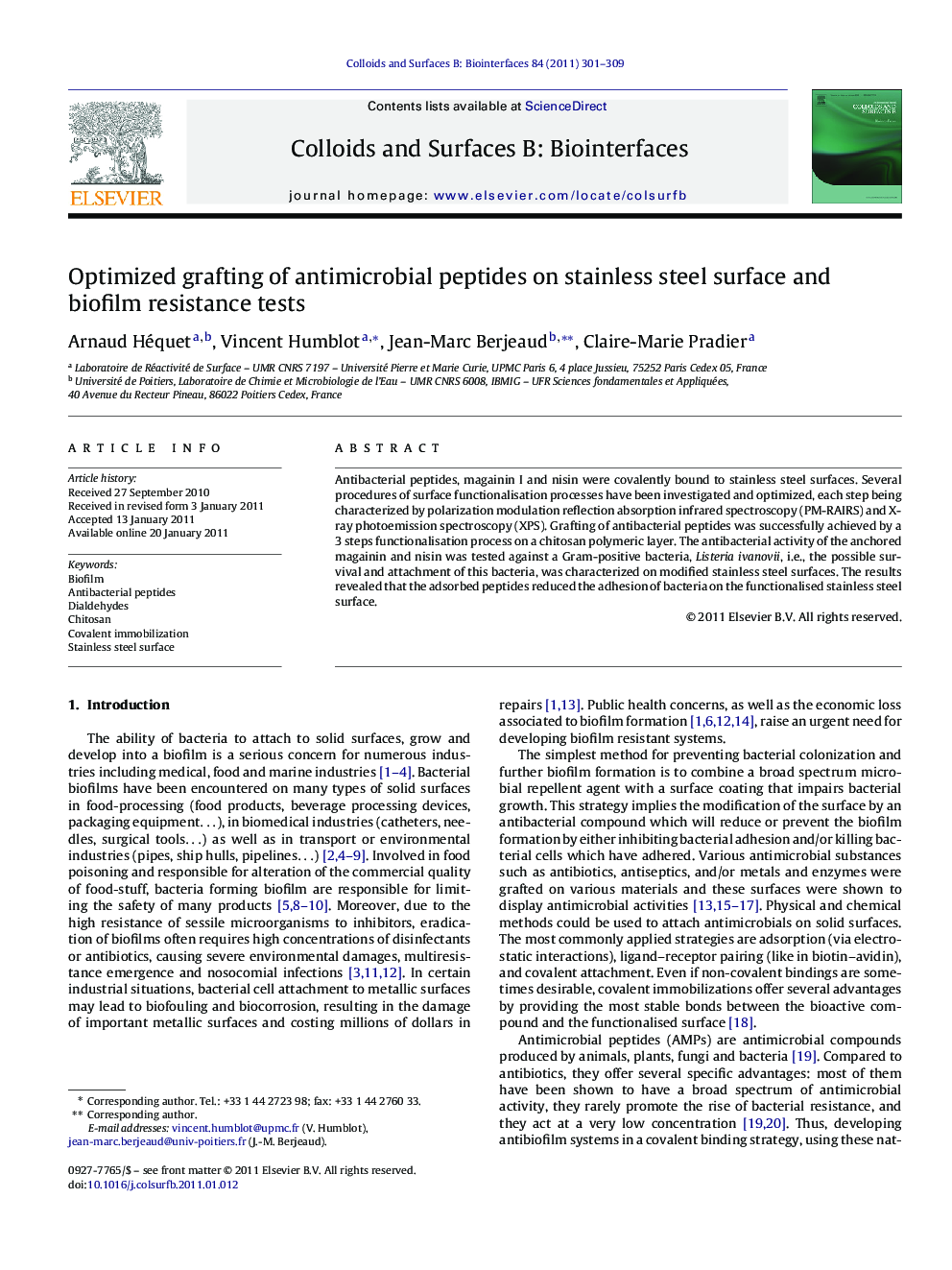| کد مقاله | کد نشریه | سال انتشار | مقاله انگلیسی | نسخه تمام متن |
|---|---|---|---|---|
| 601131 | 879932 | 2011 | 9 صفحه PDF | دانلود رایگان |

Antibacterial peptides, magainin I and nisin were covalently bound to stainless steel surfaces. Several procedures of surface functionalisation processes have been investigated and optimized, each step being characterized by polarization modulation reflection absorption infrared spectroscopy (PM-RAIRS) and X-ray photoemission spectroscopy (XPS). Grafting of antibacterial peptides was successfully achieved by a 3 steps functionalisation process on a chitosan polymeric layer. The antibacterial activity of the anchored magainin and nisin was tested against a Gram-positive bacteria, Listeria ivanovii, i.e., the possible survival and attachment of this bacteria, was characterized on modified stainless steel surfaces. The results revealed that the adsorbed peptides reduced the adhesion of bacteria on the functionalised stainless steel surface.
The different antibiofilm systems tested with GA (a) and Tere (b) in this study.Figure optionsDownload as PowerPoint slideResearch highlights
► Antibacterial peptides (magainin and nisin) were successfully grafted on stainless steel surfaces in a 3-step functionalisation process.
► The antibiofilm activity of the surfaces is clearly due to the presence of nisin or magainin.
► The inhibition results of antibiofilm systems are not fully satisfying, with regard to the formation of fully biofilm-resistant surfaces.
► We propose an alternative strategy with the use of aptamers.
Journal: Colloids and Surfaces B: Biointerfaces - Volume 84, Issue 2, 1 June 2011, Pages 301–309